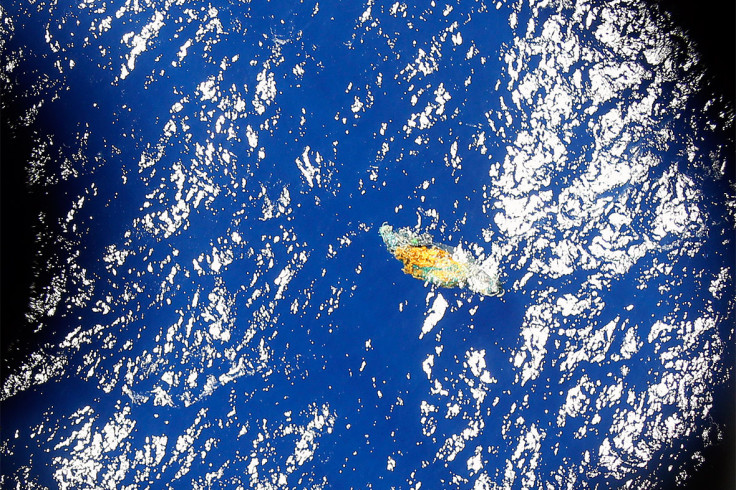Malaysia Airlines flight MH370: ATC supervisor caught napping in crucial hours following flight disappearance

The Malaysian air traffic control supervisor was asleep on duty during the crucial hours following the disappearance of flight MH370 on 8 March, 2014, according to the interim report released by Malaysia's civil aviation authority based on investigations by an international team.
Released a year after the Malaysia Airlines flight went missing, transcripts of conversation have revealed that during the period between 1.20 am local time when communications from the flight had ceased, and 5.20 am, the supervisor was asleep.
This has been deduced from investigations into the conversation between the airlines staff member and the air traffic controller on the fateful day.
The Malaysian controller insisted he had only taken over tower operations at 3 am and was not sure about earlier details.
"Aaaa ... never mind laa I wake up my supervisor and ask him to check again, to go to the room and check what the last contact ... all this thing laa," the controller said.
Yet another aspect highlighted in the report is how air traffic controllers in Vietnam's Ho Chi Minh took 20 minutes to start asking why the plane had not yet entered its airspace when international protocols demand this should have happened within two minutes.
Expired battery
The report has also found that the battery powering the underwater locator beacon on the aircraft had expired in 2012.
The 600-page interim report submitted on the anniversary of the flight's disappearance, however, does not cast any suspicion on the crew.
Termed an "oversight" by investigators, the battery expiry could be key in legal action against Malaysia Airlines and in determining compensation.
The beacon is designed to send a signal if a crash occurs in water. The finding could explain why the search for the aircraft has been fruitless so far.
The report said that the expired battery could still operate past its official lifetime but could lose effectiveness.
Language issue
Transcripts show Vietnamese air traffic controllers never responded to at least one emergency message due to inability to understand English.
International rules introduced in 2010 require all pilots and air traffic controllers to pass a test in English.
When Malaysia Airlines insisted the plane was flying over Cambodia, it was in fact flying thousands of kilometres away on auto-pilot into the vast expanse of the southern Indian Ocean, shows data.
A lack of co-ordination between Malaysia's military and the air traffic controllers as they tracked an unidentified aircraft is among the many other questions thrown up by the report.
The report was focused on air safety issues related to the MH370. Investigators did not probe the backgrounds of the 227 passengers or the possibility of a hijack.
An international team of investigators had probed a range of issues including the personal, psychological and financial profiles of the captain and co-pilot, and the backgrounds of the 10 cabin crew.
Investigators had studied the pilots on CCTV recordings on the day of the flight and on three previous flights and observed no significant behavioural changes.
The airline blamed a problem in computer systems that tracked equipment updates for the expiry of the battery.
The report also finally acknowledged that civilian radar had tracked the plane for a short time after it diverted on 8 March, 2014.
The aircraft was airworthy at the time it went missing and there was nothing amiss in its mechanical systems, according to available data and maintenance records.
Crew cleared by initial investigations
Suspicion had initially fallen on the cockpit crew of pilot Zaharie Ahmad Shah and his co-pilot Fariq Abdul Hamid, with other theories including a mechanical problem or hijack.
Investigations will continue, said the report, adding that "new information that may become available may alter this information".
"The investigation team expects that further factual information will be available from the wreckage and flight recorders if the aircraft is found," it said.
The Boeing 777-200ER disappeared on a flight from Kuala Lumpur to Beijing with 227 passengers and 12 crew members on board. It is believed to have flown thousands of kilometres off course before eventually crashing into the Indian Ocean.
The search along a rugged 60,000 sq km patch of the sea floor some 1,600 km (1,000 miles) west of the Australian city of Perth has found nothing so far.
Relatives of those on board the plane held vigils over the weekend to mark the anniversary. "I can't sleep at night, each night I'm only getting about two hours, but I'm certain that my daughter is still alive and I'm going to get her back," one mother said.
Australia's Deputy Prime Minister Warren Truss recently said the search could not go on forever, and that discussions were under way between Australia, China and Malaysia as to whether to call it off soon.
However, Malaysian Prime Minister Najib Razak and the Chinese government said they remained committed to the search. Most of the passengers were from China.
© Copyright IBTimes 2024. All rights reserved.





